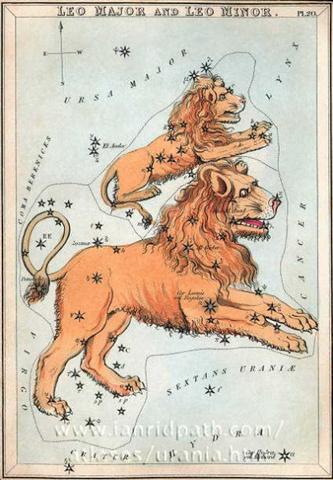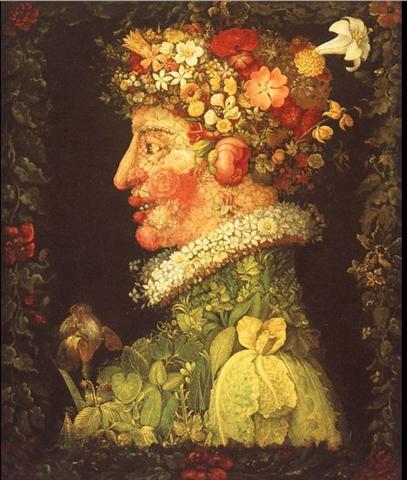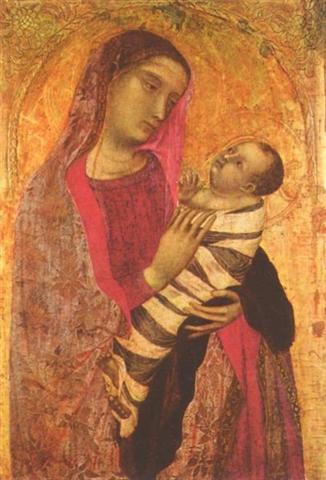We can from this put Ca5-5 (110)

in its proper context:
 |
 |
 |
 |
 |
|
Ca1-16 |
Ca1-17 |
Ca1-18 (→ 4 * 29½) |
Ca1-19 (110 - 91) |
Ca1-20 |
| koia ka hua |
koia ki te henua |
kiore kikiu - te
henua |
te maitaki - te
kihikihi |
hakaraoa - te
henua |
|
Raoa.
Pau.: To choke on a fishbone.
Mgv.: roa, a bone stuck in the
throat. Ta.: raoa, to choke on a
bone. Sa.: laoa, to have
something lodged in the throat. Ma.:
raoa, to be choked. Churchill. |
|
April
6
Al Batn Al Hūt-26 (Belly of the Fish) /
Revati-28 (Prosperous) /
1-iku (Field Measure)
MIRACH (Girdle) =
β Andromedae, KEUN MAN MUN (Camp's South
Gate) = φ Andromedae
(16.0), ANUNITUM = τ Piscium (16.5),
REVATI (Abundant) = ζ Piscium
(16.9)
REGULUS
(α Leonis) |
April 7
ν Phoenicis (17.4),
κ Tucanae (17.6)
*342.0 = *383.4 - *41.4
= *159.0 + *183.0 |
April 8
no
star listed (18) |
9
(365 + 99 = 464)
ADHIL (Garment's Train)
=
ξ
Andromedae
(19.3),
θ
Ceti (19.7) |
10
(100)
KSORA (Knee) = δ Cassiopeiae
(20.1),
ω
Andromedae (20.6),
γ
Phoenicis (20.8) |

... Though Andromeda
has its roots most firmly in the Greek
tradition, a female figure in
Andromeda's place appeared in Babylonian
astronomy. The stars that make up Pisces
and the middle portion of modern
Andromeda formed a constellation
representing a fertility goddess,
sometimes named as Anunitum or
the Lady of the Heavens ... |
|
Oct 6
AL DAFĪRAH (Tuft) = β Com. Ber. (199.4)
*158.0 = *199.4 - *41.4 |
Oct 7
(280)
σ Virginis (200.4)
*159.0 = *200.4 - *41.4 |
Oct 8
γ Hydrae (201.0),
ι
Centauri (201.4)
*160.0 = *201.4 - *41.4 |
9
Al Simāk-12 (Lofty) /
Chitra-14 (Bright One) /
Horn-1 (Crocodile) /
Sa-Sha-Shirū-20
(Virgin's Girdle) /
ANA-ROTO-3 (Middle pillar)
MIZAR = ζ Ursae Majoris (202.4),
SPICA = α Virginis, ALCOR = 80 Ursae
Majoris
(202.7)
SADALMELIK (α Aquarii)
*161.0 = *202.4 - *41.4 |
10
71 VIRGINIS
(203.6) |
|
... Proclus informs us
that the fox star nibbles continuously at the thong
of the yoke which holds together heaven and earth;
German folklore adds that when the fox succeeds, the
world will come to its end. This fox star is no
other than Alcor, the small star g near zeta Ursae
Majoris (in India Arundati, the common wife of the
Seven Rishis, alpha-eta Ursae ...
 |

... Mons Maenalus, at the feet of
Boötes, was formed by Hevelius, and
published in his Firmamentum
Sobiescianum; this title coinciding
with those of neighboring stellar groups
bearing Arcadian names. It is sometimes,
although incorrectly, given as Mons
Menelaus, - perhaps, as Smyth
suggested, after the Alexandrian
astronomer referred to by Ptolemy and
Plutarch. The Germans know it as the
Berg Menalus; and the
Italians as Menalo. Landseer has
a striking representation of the
Husbandsman, as he styles Boötes, with
sickle and staff, standing on this
constellation figure. A possible
explanation of its origin may be found
in what Hewitt writes in his Essays
on the Ruling Races of Prehistoric Times:
The Sun-god thence climbed up the
mother-mountain of the Kushika race as
the constellation Hercules, who is
depicted in the old traditional
pictorial astronomy as climbing
painfully up the hill to reach the
constellation of the Tortoise, now
called Lyra, and thus attain the polar
star Vega, which was the polar star from
10000 to 8000 B.C. May not this modern
companion constellation, Mons Maenalus,
be from a recollection of this early
Hindu conception of our Hercules
transferred to the adjacent Bootes? |
In April 6 the Little King (Regulus)
culminated (at 21h).

The illustration in Ca1-16 shows a
transformation of
the thumb of the figure running away into a
'fruit' (hua, offspring).
4 days later was the line across connecting
Adhil with Spica (and the Fox) - where the other
king, Sad-al-melik (the Lucky King) in Aquarius
culminated (at 21h).

From the bottom of the
vertical line in the middle of the first of the
maitaki signs we can see hua poporo
growing upwards.
|
 |
 |
|
maitaki |
Ca1-19 |
Maitaki. Clean, neat, pure, pretty,
nice, beautiful, handsome; tagata rima
maitaki, clean-handed man, correct
man. Vanaga. 1. Good. Henua maitaki =
the good earth. 2. Shine. Marama maitaki
= the shining moon. Barthel. Ce qui est bon.
Jaussen according to Barthel. Meitaki,
good, agreeable, efficacious, excellent,
elegant, pious, valid, brilliant, security,
to please, to approve (maitaki);
ariga meitaki, handsome, of pleasant
mien; mea meitaki ka rava, to
deserve; meitaki ke, marvelous,
better. Hakameitaki, to make good, to
amend, to do good, to bless, to establish.
Meitakihaga, goodness. PS Pau.:
maitaki, good. Mgv.: meitetaki,
beautiful, good. Mq.: meitai, good,
agreeable, fit, wise, virtuous. Ta.:
maitaiki, good, well. Niuē: mitaki,
good. Maitakia, clean. Churchill.
Metoro explained it was the season of 'ashes' (te
kihikihi). Slash-and-burn agriculture used
ashes to promote new growth.

Similarly, the shadow of the old ruler could be
detrimental for the new ruler to achieve
full maturity.
...
When the man, Ulu,
returned to his wife from his visit to the
temple at Puueo, he said, 'I have heard
the voice of the noble Mo'o, and he has
told me that tonight, as soon as darkness draws
over the sea and the fires of the volcano
goddess, Pele, light the clouds over the
crater of Mount
Kilauea, the black cloth will cover my
head. And when the breath has gone from my body
and my spirit has departed to the realms of the
dead, you are to bury my head carefully near our
spring of running water. Plant my heart and
entrails near the door of the house. My feet,
legs, and arms, hide in the same manner. Then
lie down upon the couch where the two of us have
reposed so often, listen carefully throughout
the night, and do not go forth before the sun
has reddened the morning sky. If, in the silence
of the night, you should hear noises as of
falling leaves and flowers, and afterward as of
heavy fruit dropping to the ground, you will
know that my prayer has been granted: the life
of our little boy will be saved.' And having
said that, Ulu fell on his face and died.
His wife sang a dirge of
lament, but did precisely as she was told, and
in the morning she found her house surrounded by
a perfect thicket of vegetation. 'Before the
door,' we are told in Thomas Thrum's rendition
of the legend, 'on the very spot where she had
buried her husband's heart, there grew a stately
tree covered over with broad, green leaves
dripping with dew and shining in the early
sunlight, while on the grass lay the ripe, round
fruit, where it had fallen from the branches
above. And this tree she called Ulu
(breadfruit) in honor of her husband ...
... the Maori singers in New Zealand, where the
breadfruit did not grow, 'translated' kuru
(= breadfruit) in the old songs - from the times
when their forefathers lived in a warmer climate
- into poporo. Barthel points out that in
the Marquesas they counted the fruits from the
breadfruit trees in fours, perhaps thereby
explaining the four 'berries' in this type of
glyph. The breadfruit did not grow on Easter
Island but the berries of Solanum nigrum
were eaten in times of famine. Barthel compares
with the word koporo on Mangareva. The
poor crop of breadfruits at the end of the
harvest season was called mei-koporo,
where mei stood for breadfruit. On other
islands breadfruit was called kuru,
except in the Marquesas which also used the word
mei. Koporo was a species of
nightshade ...
The time of
maturity surely was due at high summer, here was
the end of the springtime childhood - as illustrated by
Achimboldo by showing the left side of his
face (looking back):

In ancient Egypt a new half-year was
brought along with Sirius:
|
79 |
 |
 |
|
Ca4-24 (100) |
Ca4-25 |
| manu rere |
tupu te rakau |
|
June 29 |
June 30 (SIRIUS) |
|
Dec 29 |
Dec 30 (364) |
... The Sothic cycle was based on
what is referred to in technical jargon as 'the
periodic return of the heliacal rising of Sirius',
which is the first appearance of this star after a
seasonal absence, rising at dawn just ahead of the
sun in the eastern portion of the sky. In the case
of Sirius the interval between one such rising and
the next amounts to exactly 365.25 days - a
mathematically harmonious figure, uncomplicated by
further decimal points, which is just twelve minutes
longer than the duration of the solar year ... In
ancient Egypt they thought Sirius was behind the
yearly rise of the Nile ... the seasonal cycle,
throughout the ancient world, was the foremost sign
of rebirth following death, and in Egypt the
chronometer of this cycle was the annual flooding of
the Nile ...
And after Wasat
(Middle) in July
8 (→ 7-8 → *78 → Capella and Rigel)

was the point (ihe)
for the
new child (tamaiti):
|
 |
 |
|
tamaiti |
Ca5-6 (111) |
Tama. 1. Shoot (of plant), tama miro,
tree shoot; tama tôa, shoot of
sugarcane. 2. Poles, sticks, rods of a frame. 3.
Sun rays. 4. Group of people travelling in
formation. 5. To listen attentively (with ear,
tariga, as subject, e.g. he tama te
tariga); e-tama rivariva tokorua tariga
ki taaku kî, listen carefully to my words.
Tamahahine, female. Tamahine (=
tamahahine), female, when speaking of
chickens: moa tamahine, hen. Tamâroa,
male. Vanaga. 1. Child. P Pau.: tama riki,
child. Mgv.: tama, son, daughter, applied
at any age. Mq.: tama, son, child, young
of animals. Ta.: tama, child.
Tamaahine (tama 1 - ahine),
daughter, female. Tamaiti, child P Mq.:
temeiti, temeii, young person.
Ta.: tamaiti, child. Tamaroa, boy,
male. P Mgv.: tamaroa, boy, man, male.
Mq.: tamaóa, boy. Ta.: tamaroa,
id. 2. To align. Churchill. In the Polynesian
this [tama na, father in the Efaté
language] is distinguished from táma
child by the accent tamā or by the
addition of a final syllable which automatically
secures the same incidence of the accent,
tamái, tamana ... Churchill 2

|
7 |
 |
 |
 |
|
Ca5-4 |
Ca5-5 |
Ca5-6
(111) |
| te henua |
kua iri i te rakau |
ihe tamaiti |
|
Iri.
1. To go up; to go in a boat on the sea (the
surface of which gives the impression of
going up from the coast): he-eke te
tagata ki ruga ki te vaka, he-iri ki te
Hakakaiga, the men boarded the boat and
went up to Hakakainga. 2. Ka-iri
ki puku toiri ka toiri. Obscure
expression of an ancient curse.
Vanaga. Iri-are, a seaweed. Vanaga. |
|
July 8
λ Gemini (109.4),
WASAT (Middle) = δ Gemini
(109.8)
*68.0 = *109.4 - *41.4 |
July 9
no
star listed (110) |
July
10 (191)
ALUDRA (Virgin) = η
Canis Majoris
(111.1),
PROPUS = ι
Gemini (111.4), GOMEISA (Water-eyed)
= β Canis Minoris
(111.6)
*70.0 = *111.4 - *41.4 |
|
he pua nakonako. |
he ipu ngutu (*104) |
he rangi koro vao. |
he tua mamari manu. |
he tua manu auau |
|
a Oti. |
a Teke. a Oti. |
|
The expressions Tonga, Kona,
Toa (Sam., Haw., Tah.), to
indicate the quarter of an island or of
the wind, between the south and west,
and Tokelau, Toerau,
Koolau (Sam., Haw., Tah.), to
indicate the opposite directions from
north to east - expressions universal
throughout Polynesia, and but little
modified by subsequent local
circumstances - point strongly to a
former habitat in lands where the
regular monsoons prevailed.
Etymologically 'Tonga', 'Kona',
contracted from 'To-anga' or 'Ko-ana',
signifies 'the setting', seil. of the
sun. 'Toke-lau', of which the
other forms are merely dialectical
variations, signifies 'the cold, chilly
sea'.
Fornander.
|
 |
 |
 |
 |
 |
|
rau hei |
toa |
toga |
tua mamari manu. |
tua manu auau |
|
|
MAY 3 |
4 (4 * 31 = 124) |
5 |
6
(*46) |
7
(127) |
 |
 |
 |
 |
 |
|
Ga2-13 |
Ga2-14 |
Ga2-15 (45) |
Ga2-16 |
Ga2-17 |
|
WEZEN (Weight)
=
δ
Canis Majoris
(107.1),
τ
Gemini (107.7),
δ
Monocerotis (107.9) |
no star listed (108) |
λ Gemini (109.4),
WASAT
(Middle)
= δ Gemini
(109.8)
*68.0 = *109.4 - *41.4 |
no star listed (110) |
ALUDRA (Virgin)
= η Canis Majoris
(111.1),
PROPUS
= ι Gemini
(111.4),
GOMEISA (Water-eyed)
= β Canis Minoris
(111.6)
*70.0 = *111.4 - *41.4 |
|
July
6 |
7
(188 = 84 + 104) |
8 |
9 |
10 |
|
°July 2 |
3
(184 = 80 + 104) |
4 |
5 |
6
(*107) |
|
'June
9 |
10
(161) |
11 |
12 |
13
(*84) |
|
... The month, which takes its name from
Juppiter the oak-god, begins on June
10th and ends of July 7th. Midway comes
St. John's Day, June 24th, the day on
which the oak-king was sacrificially
burned alive. The Celtic year was
divided into two halves with the second
half beginning in July, apparently after
a seven-day wake, or funeral feast, in
the oak-king's honour ...
 |
|
"May
26 |
27 |
28
(148) |
29 |
30
(*70) |
|
CLOSE
TO THE FULL MOON: |
|
NOV 2 |
3 |
4 |
5
(*229) |
6
(310) |
|
Al Baldah-19 (City)
AL BALDAH
= π Sagittarii,
ALPHEKKA (Dish) MERIDIANA
= α Cor. Austr.
(290.1), β Cor. Austr. (290.2) |
ALADFAR (The Talons)
= η Lyrae
(291.1),
NODUS II = δ Draconis
(291.5), ψ Sagittarii (291.6), τ
Draconis (291.7), θ Lyrae (291.8) |
ω Aquilae (292.1), ρ Sagittarii (292.6),
υ Sagittarii (292.7) |
π Draconis,
ARKAB PRIOR = β¹ Sagittarii
(293.0),
ARKAB POSTERIOR = β² Sagittarii,
ALRAMI (The Archer)
= α Sagittarii
(293.2), χ Sagittarii (293.6) |
DENEB OKAB (Tail of the Eagle)
=
δ
Aquilae (Ant.)
(294.0),
α VULPECULAE (Little Fox)
(294.9) |
|
Jan 5
(*290) |
6 |
7
(372) |
8 |
9 |
|
°Jan 1 |
2 |
3
(368) |
4 |
5
(*290) |
|
'Dec
9 |
10
(*264) |
11 (345) |
12 |
LUCIA |
 |
|
"Nov 25
|
26
(*250) |
27 |
28
(360) |
29 |

|

























